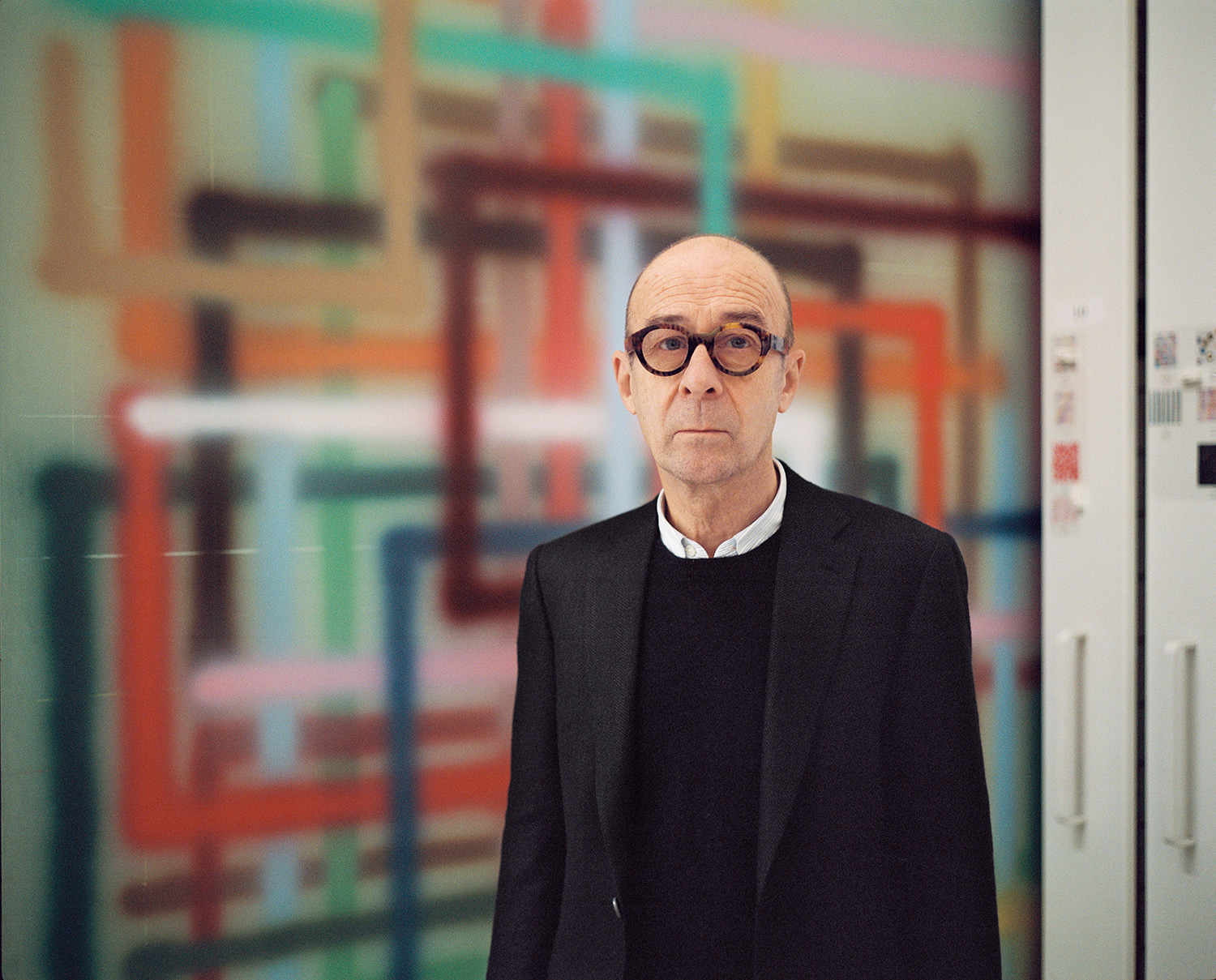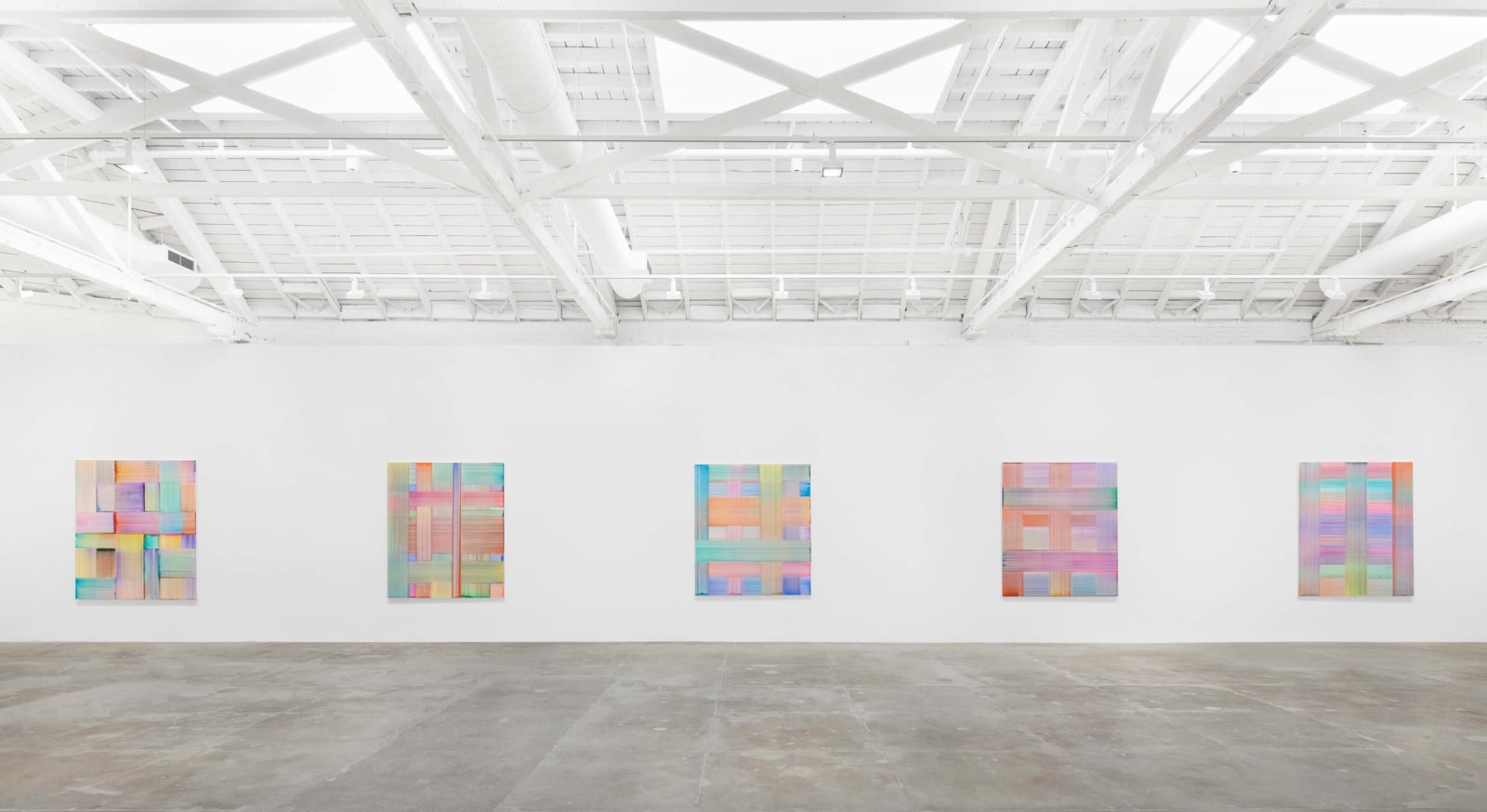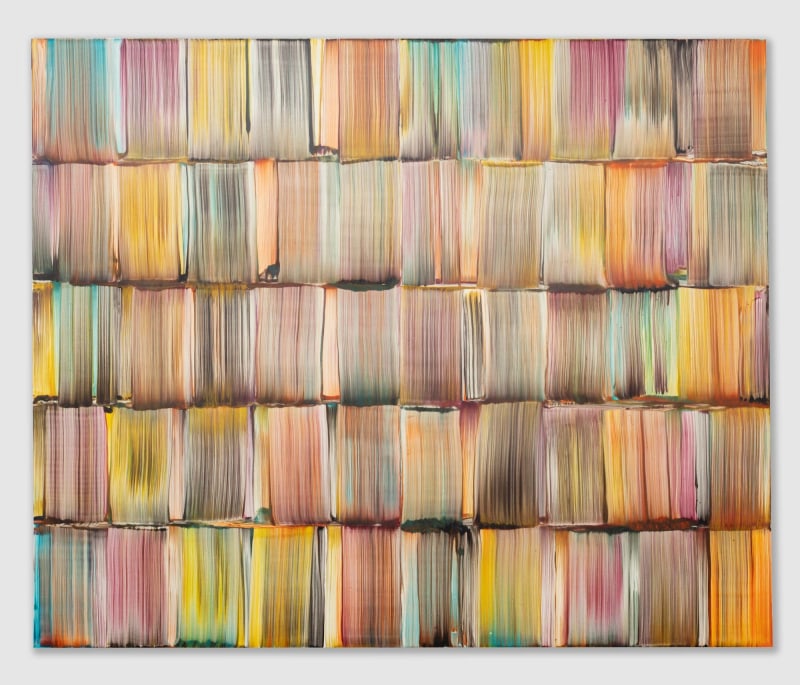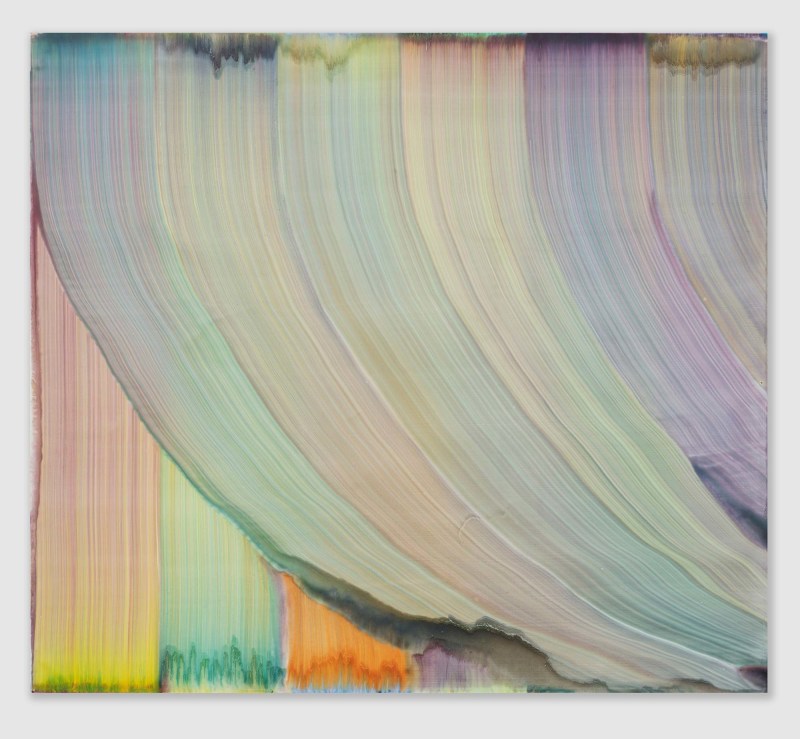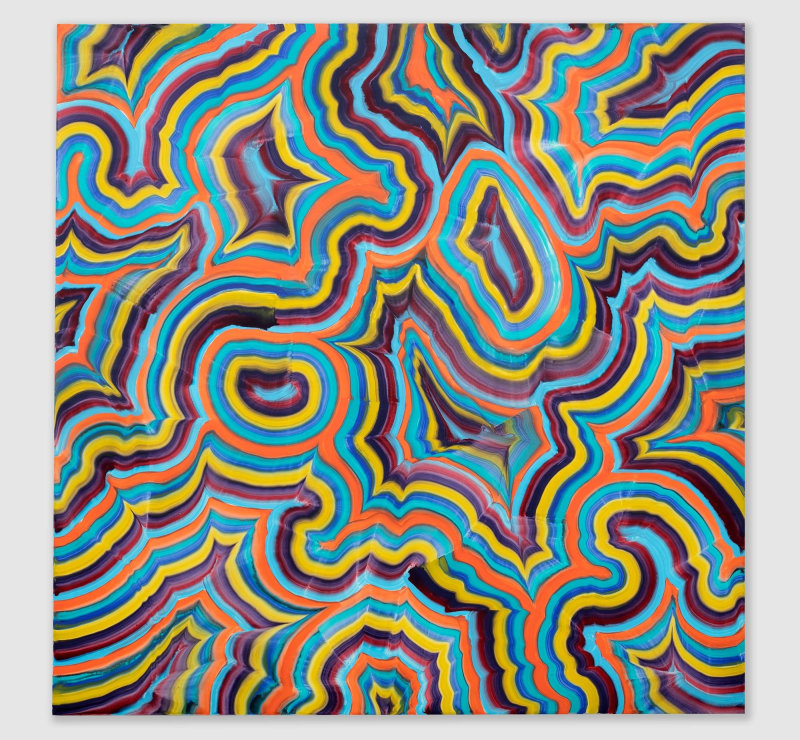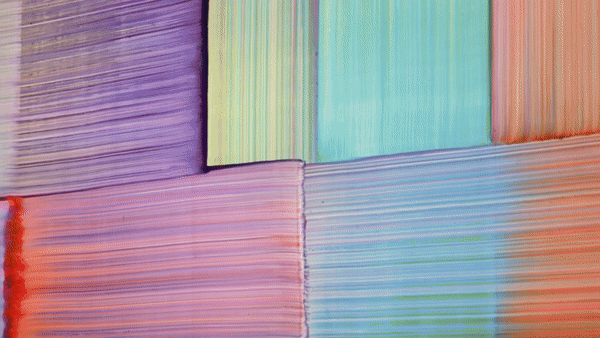Marian Goodman Gallery is pleased to continue our artist-centric newsletter
IN FOCUS, where we delve deeply into one artist on the MGG roster at a time. Aiming to show a fuller picture of the breadth of our artists' careers, we will feature our favorite stories, podcasts, interviews, artists’ writings and videos from the archive, as well as new and upcoming projects.
Bernard Frize (b. 1949, Saint-Mandé, France) lives and works in Berlin, Germany. Emerging as an artist in the 1970s, an era shaped by conceptual and politically engaged art, Frize embraced painting as a form of labor, likening it to craftsmanship. Rejecting emotional expression or personal invention, he chose to focus instead on the physical act of creation. “Painting is primarily physical work; the process itself is an action, not the aim,” Frize has explained.
Frize’s methodical approach often involves the application of strict systems, such as assigning specific colors to horizontal and vertical lines, to detach painting from personal taste. Through these rules, he explores the fundamentals of the medium—materials, order, and sensory experience—while creating works that appear replicable, yet remain uniquely his own.
Philosophically, Frize’s practice addresses broader questions in art, such as the relationship between artistic and political correctness and the balance between decorative elements and deeper meaning. “Before being politically correct, shouldn’t a painting be artistically correct?” he asks. By focusing on color psychology, materiality, and form, Frize pushes the boundaries of painting while maintaining its textural and material integrity.
Often described as “integral performances,” Frize’s paintings embody a relationship between thought and execution. His process prioritizes detachment, allowing the works to exist independently of the artist’s identity. As he puts it, “I opt for a way of working, and the painting is simply a result of that.”
Frize’s ability to challenge tradition while embracing simplicity has made him a pivotal figure in contemporary art. His work redefines painting, offering a fresh perspective on the relationship between artist, medium, and viewer.
Frize is currently the focus of a solo exhibition titled
Shadows, Spirits and Clouds, which is the artist’s inaugural presentation with Marian Goodman Gallery, in Los Angeles. The exhibition closes on Saturday, 18 January 2025.
Awards include the Kathe-Kollwitz Prize, Germany (2015); the Fred Thieler Prize for Painting, Berlinische Galerie, Berlin, Germany (2011); the DAAD, Berlin, Germany (1993); and the Villa Medici, Rome, Italy (1984).
Today, follow along as we examine the systematic process of Frize’s painterly practice…



